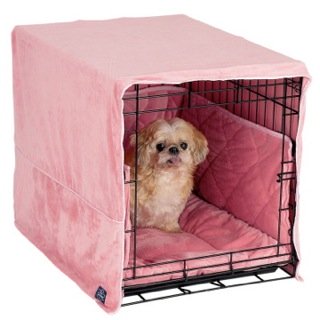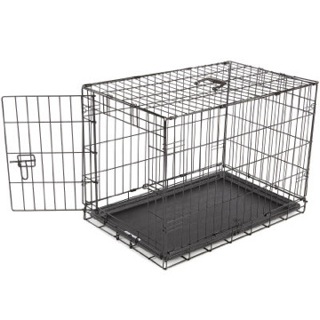|
Crate Training Your Puppy
What you need to know when Crate Training When you cannot watch your puppy, when you travel with your puppy, when you need a break from your puppy, when your puppy needs a break, or when he is overtired and getting into trouble, put him in his crate for a nap.
When crate training, start with a crate that is large enough for your puppy to sleep in comfortable and that will accommodate him for the next few months. When he outgrows this crate, you can sell it to a new puppy owner. You can then purchase an adult size crate for your dog that you can use throughout his life as necessary. (Freecycle.com is a good place to look for a used crate for free.) If you would rather buy only an adult sized crate, block off part of it with masonite or something similar to make it smaller while the puppy is little. Use this table as a guide to help you decide which crate is best suited for your dog. Please note that individual dogs within a breed can vary in size. Your dog should be able to stand up and turn around comfortably. You may decide a crate one size larger might be best for your dog. Comfort is another important part of crate training.
Introduce your puppy to his crate in a pleasant and positive way. If possible, pick a time when he is tired and relaxed. Show him something you know he will really want and something that will keep him interested for a while. You could use a stuffed Kong, a marrow bone or his dinner. Let him see you put it in his crate and then shut the door so he cannot get in. After a few seconds, open the crate and let him go in. Close the door. Praise him while he works on his reward. Before he is finished, open the door to his crate and tell him he can come out. If he chooses to stay in the crate, all the better. In the beginning, every time your puppy is in his crate make sure he gets a high reward. 
If your puppy will be sleeping in his crate, make sure that he is very well exercised and tired when you put him to bed. Set yourself up for success. Success is what crate training is all about. Return from "Crate Training" to "Puppy Training"
|

